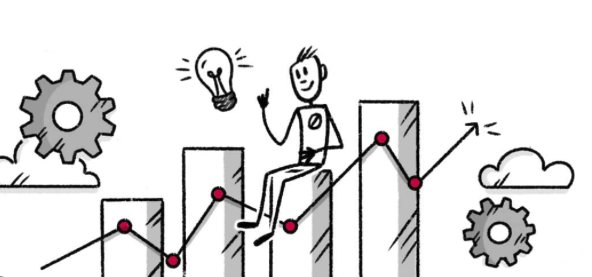In an era where rapid innovation and shifting market dynamics have become the norm, businesses are in constant search of transformative strategies to foster sustainable growth. Enter Product-Led Growth (PLG), an approach that has redefined how modern companies build, market, and scale their products. Defined by OpenView as “a go-to-market strategy that relies on using your product as the main vehicle to acquire, activate, and retain customers,” PLG has emerged as a powerful paradigm, particularly in the SaaS industry. But at the heart of PLG’s success lies a concept often overlooked yet profoundly impactful: the flywheel. Introduced by Jim Collins in his book “Good to Great,” the flywheel concept emphasizes the compounding effect of coordinated efforts over time. Unlike the traditional funnel, which places customers at the end of a linear journey, the flywheel positions them at the center, harnessing their continuous engagement to drive momentum. This article seeks to unpack the intricacies of the PLG flywheel and elucidate why it’s not just a buzzword but a transformative strategy for today’s forward-thinking businesses.
The Flywheel Concept and Its Components
The Flywheel Concept and Its Components:
The shift to the Flywheel concept in PLG is more than just a change; it’s a revolution. Think of the Flywheel not as a process with a defined beginning or end, but as a perpetual motion machine. Unlike traditional methods that often end once a sale is made, the Flywheel recognizes that every stage of the customer journey, from acquisition to advocacy, holds equal importance. This emphasis on a circular, self-sustaining model ensures that customers remain engaged and businesses achieve sustainable growth.
Freemium’s Role:
At the heart of the Flywheel is the ‘Freemium’ model – a genius strategy tailored for today’s discerning customers. By offering a free version of your product, you’re not just providing a teaser; you’re building trust. This approach draws users in, letting them experience firsthand the unique value propositions of your product without any financial commitments. And the magic doesn’t stop there. Satisfied freemium users, having recognized the product’s value, often become its most vocal advocates, driving organic growth through genuine word of mouth. At beproductled.com, we understand that every free user has the potential to become not just a paying customer, but also a brand ambassador.
Effective Onboarding:
Transitioning from a freemium to a paid user hinges on the onboarding process. At beproductled.com, we’ve observed that personalized onboarding experiences, tailored to individual user needs, yield the best results. Complementing this with a suite of educational tools, as advocated by, can maximize product appreciation and user engagement. Well-informed users are more likely to become long-term, loyal customers.
Adopting the Flywheel approach within the PLG strategy provides businesses with a roadmap for achieving consistent growth and customer loyalty in an ever-evolving market. By emphasizing perpetual engagement, delivering value at every touchpoint, and leveraging strategies such as freemium offerings and effective onboarding, businesses can position themselves at the forefront of the industry.
Lifecycle Marketing in Product-Led Growth (PLG) Strategy: Navigating the User Journey
For businesses in the realm of SaaS and tech, the way they engage with customers has transformed dramatically. The adoption of the Flywheel in the Product-Led Growth (PLG) strategy, as highlighted by beproductled.com, emphasizes a continuous and cyclic approach to growth. Central to this strategy is lifecycle marketing. But what does it entail? Let’s break it down, stage by stage.
1. Awareness: The First Impression
The user’s journey begins with awareness. But how does a brand capture attention in an ocean of competitors? The key lies in creating compelling content. Whether it’s insightful blog posts, engaging videos, or webinars, it’s about resonating with potential users, showcasing your product’s uniqueness, and setting the stage for deeper engagement.
2. Engagement: Beyond the First Date
Engagement is not a one-time event but an ongoing dialogue. Through personalized messaging, be it in-app prompts or tailored emails, businesses have the chance to continuously provide value. As beproductled.com suggests, the essence of the PLG model is to ensure that users find consistent value, prompting them to engage deeper with the product.
3. Conversion: Making the Commitment
While engagement ensures users are involved, conversion is the step where they fully invest. Here, it’s crucial to highlight the additional benefits and features that come with upgrades. Demonstrating the enhanced value users will gain can be the nudge they need to transition from a free or basic plan to a paid one
4. Retention: Cultivating Long-Term Relationships
Even after conversion, the journey isn’t over. In fact, the most crucial phase often lies in retention. Maintaining user loyalty is no easy feat, but with exceptional customer support, continuous product improvements, and ongoing communication, businesses can ensure that users not only stay but also become advocates for the brand.
The lifecycle marketing approach in the PLG strategy offers a holistic view of the user journey. By catering to users’ needs at every stage, businesses can create a self-sustaining growth model that thrives on user satisfaction and loyalty. As we emphasize at beproductled.com, understanding and effectively navigating this journey is the key to long-term success in today’s competitive landscape.
In Conclusion
Navigating the complexities of Product-Led Growth requires not only knowledge but also actionable insights tailored to your business’s unique challenges and strengths. Understanding the lifecycle is just one piece of the PLG puzzle. If you’re curious about how ready your business truly is for PLG, there’s no better way to find out than by taking an informed assessment. We invite you to try our free PLG Readiness Assessment test at beproductled.com. Gain clarity, discover areas for optimization, and set your business on a trajectory towards sustainable growth. The future of your business deserves more than assumptions; it demands informed decisions. Start your PLG journey with confidence today.
